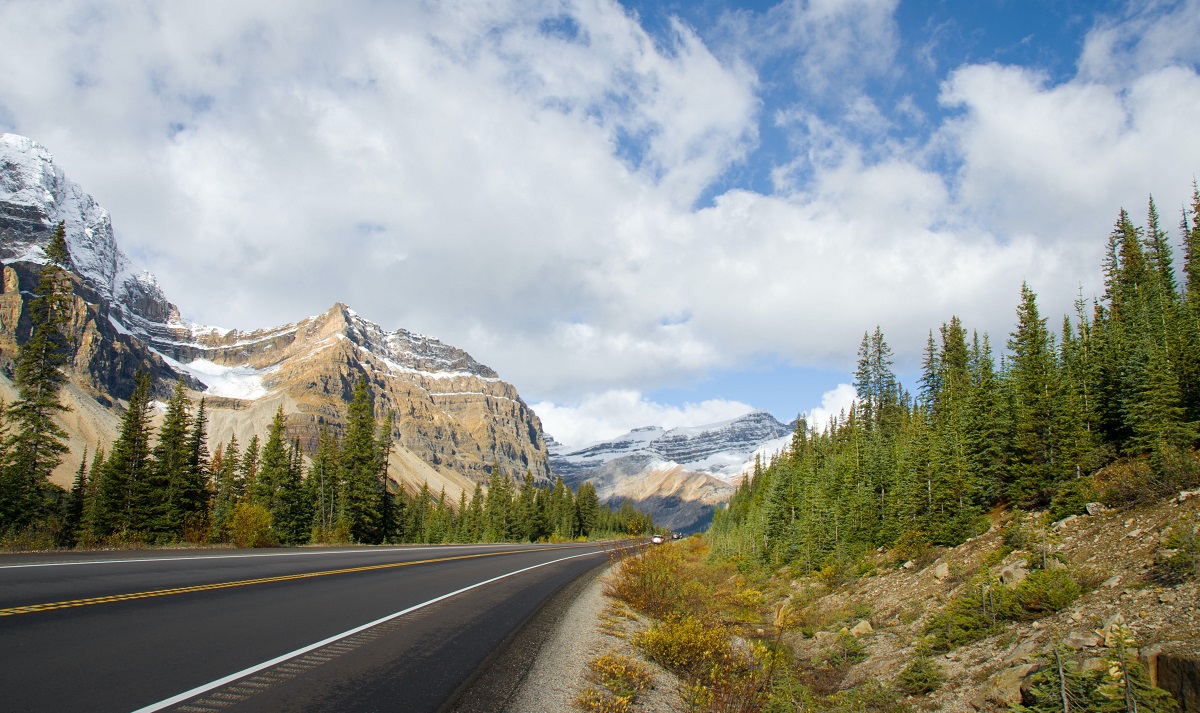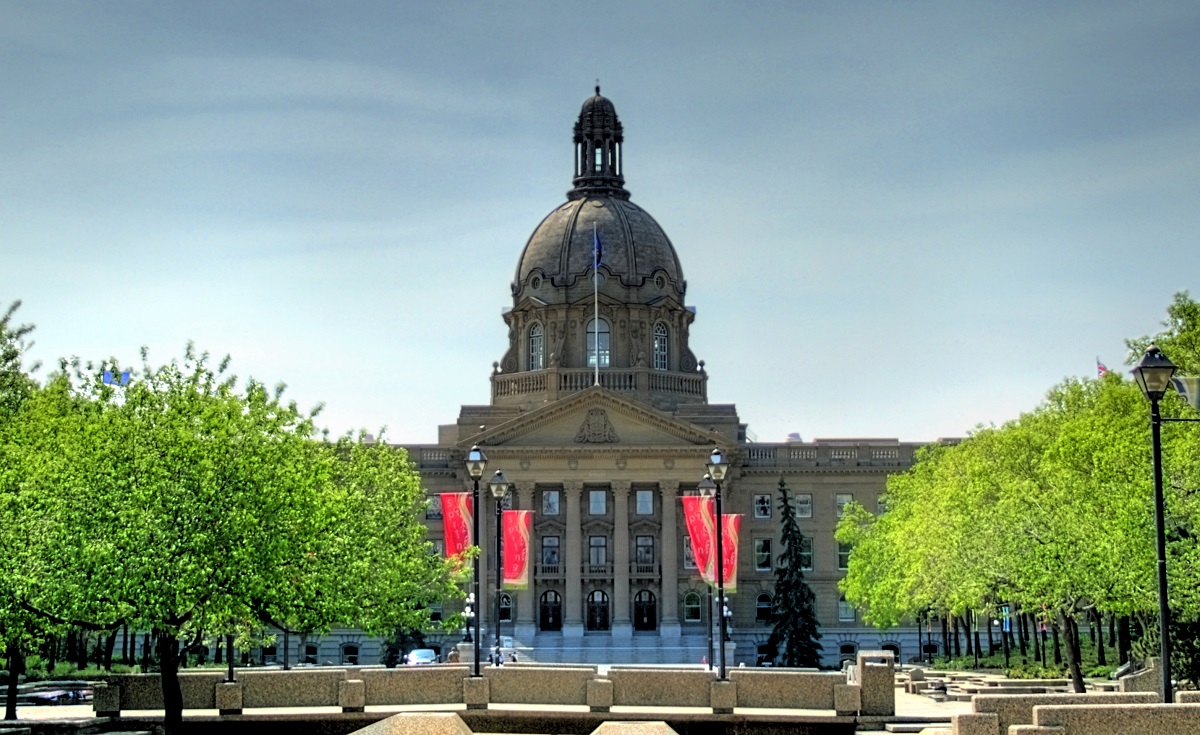Quick search
CTRL+K
Quick search
CTRL+K

Jasper National Park is the northernmost national park in the Rocky Mountains, and it is a natural starting point for tours in the mountain range, as the Trans-Canada Railway stops in the town of Jasper. The park’s area covers 10,878 km² and consists of glaciers, hot springs, large forests, lakes, waterfalls and of course a varied landscape of mountains and valleys.
Jasper’s and the national park’s name derives from Jasper Haws, who was a fur trader from Maryland who worked for the North West Company. In 1815, Haws took command of a North West Company trading post at Brûlé Lake, and the site became known as Jasper House. The house was destroyed in 1910, but it gave its name to both the national park and the town of Jasper.
Jasper Forest Park was established in 1907 in connection with plans for a Canadian transcontinental railroad that would cross the Rocky Mountains at Yellowhead Pass. Jasper Forest Park was conceived to be a resort in the mountains with a railway station, tourist hotels and a service town for the area. In 1930, the park’s status was changed to national park.
The park was inscribed on the UNESCO World Heritage List in 1984, along with other parks in Canada’s Rocky Mountains. It was due to the fantastic mountain landscapes with beautiful peaks, glaciers, lakes, waterfalls, gorges, caves and a richness in flora and fauna that can be enjoyed everywhere in the large park.
There is access to large parts of the park, where the town of Jasper is located as the natural center. You can get to Jasper from three directions, and these roads are also the only entrances to the park. From the south you can drive from Calgary and Banff National Park along the Icefields Parkway, from the east you can drive along the road from Edmonton, while from the west you can drive to Jasper from, for example, Vancouver and Kamloops.
All the routes through the park are unforgettable with the magnificent scenery you can enjoy in the Rocky Mountains. Jasper is a good starting point, and here you can discover the area around the railway station, which was crucial in the development of the town and the national park. Close to the town, you can take the Jasper Skytram, which is a cable car to a height of 2,263 metres. From the top station you can go to Whistler’s Summit, which is at 2,463 meters.
From Jasper, you can drive to Maligne Canyon in a short time, which is a beautiful place along the Maligne River. Here you will experience dramatic waterfalls, hollow channels in the rocks and several natural bridges. Maligne Canyon is an excellent place for hiking, and you can continue the drive along the Maligne River to the northern end of Maligne Lake. Along the way you pass the beautiful Medicine Lake.
On the stretch between Jasper and the eastern entrance to Edmonton, you can turn off the road and drive to Miette Hot Springs. It is a place with the warmest natural water in the Canadian Rocky Mountains. The water is 54°C from the mountains and it is cooled to 40°C in the large and seasonal pool of Miette Hot Springs.
You should also drive along the Icefields Parkway, which is the most well-known of the roads in Jasper National Park and the more southerly Banff National Park. The road is used by tens of thousands of tourists every summer, and they come to enjoy the beautiful landscapes along the 233 kilometer long road. On the way from north to south, you can stop at Mount Edith Cavell, Athabasca Falls, Sunwapta Falls and Athabasca Glacier.

Icefields Parkway is the name of the road that connects the town of Jasper in the north with Lake Louise in the south. The road is used by countless tourists every summer who are on a road trip to experience the beautiful Canadian Rocky Mountains. The Icefields Parkway is 233 kilometers long and it connects Jasper National Park and Banff National Park.
If you drive south from Jasper, there are many places of interest on the way to Banff, and you can stop at several viewpoints and parking options at hiking trails to beautiful places in nature. Athabasca Falls and Sunwapta Falls are good spots on the northern part of the road. Athabasca Falls is 24 meters high, 46 meters wide and with large volumes of water pouring over the edge. Sunwapta Falls is similarly impressive and has a drop of 18.5 meters.
If you drive further south, you come to the Icefields Centre, where you can see the Athabasca Glacier, which is one of six glacier fronts from the Columbia Icefield. The glacier has retreated considerably over the past hundred years, but you can still see it and walk to it on the interesting hiking trail that has been established here.
After the Icefields Centre, you cross the border between Jasper National Park and Banff National Park when you drive further south. Here you come to a stop where there is a short hiking route to Mistaya Canyon, which is a nice walk through the forest to a beautiful gorge.
The next major natural attractions are the beautiful lakes Peyto Lake and Bow Lake with crystal clear water and views of majestic mountains. You can enjoy the scenery and the view from the viewpoints along the Icefields Parkway or take a walk in the area along the northern shore of Bow Lake. The hiking trail goes all the way to Bow Glacier Falls.
The beautiful lakes continue along the Icefields Parkway to the south with first Hector Lake and Herbert Lake before reaching the town and Lake Louise. The lake is perhaps the most famous in Canada’s Rocky Mountains, and it is here that you find the luxury hotel Fairmont Château Lake Louise. From Lake Louise, you can continue to Moraine Lake south of the city, which complements Lake Louise in the most beautiful way, or drive on to the town of Banff to the southeast.

Banff National Park is a national park that was established in 1885, making it Canada’s oldest. It is located along the old railway line between Calgary and Vancouver, and the 6,641 km² park is an easily accessible with entrances from Calgary in the east, from Rocky Mountain House in the northeast, from Jasper National Park in the north, and from two roads in the west from, for example, Vancouver and Kamloops.
In the early years, the Canadian Pacific Railway was crucial to the development of the tourism into the national park. The railway company built the Banff Springs Hotel and Château Lake Louise and attracted tourists to the luxurious hotels in the stunningly beautiful surroundings. In the early 1900s, roads were built in the park, and access became easier for many over the years.
Read more about Banff National Park

Edmonton is the capital of the province of Alberta, and it is the northernmost city with more than a million inhabitants in North America. Edmonton, with its location, is called the gateway to the north because the city is the starting point for major raw material projects in northern Alberta and the Northwest Territories.
Edmonton is the cultural and economic center of northern Alberta, and there are many activities to come for. Downtown Edmonton is characterized by high-rise buildings that make the city skyline as you approach the metropolitan area. In addition to the many modern office buildings, there are numerous heritage sights and monuments from the city’s history.
 Jasper National Park
Jasper National Park
Overview of Jasper National Park
Jasper National Park is the northernmost national park in the Rocky Mountains, and it is a natural starting point for tours in the mountain range, as the Trans-Canada Railway stops in the town of Jasper. The park’s area covers 10,878 km² and consists of glaciers, hot springs, large forests, lakes, waterfalls and of course a varied landscape of mountains and valleys.
Jasper’s and the national park’s name derives from Jasper Haws, who was a fur trader from Maryland who worked for the North West Company. In 1815, Haws took command of a North West Company trading post at Brûlé Lake, and the site became known as Jasper House. The house was destroyed in 1910, but it gave its name to both the national park and the town of Jasper.
About the Jasper travel guide
Contents: Tours in the city + tours in the surrounding area
Published: Released soon
Author: Stig Albeck
Publisher: Vamados.com
Language: English
About the travel guide
The Jasper travel guide gives you an overview of the sights and activities of the Canadian city. Read about top sights and other sights, and get a tour guide with tour suggestions and detailed descriptions of all the city’s most important churches, monuments, mansions, museums, etc.
Jasper is waiting for you, and at vamados.com you can also find cheap flights and great deals on hotels for your trip. You just select your travel dates and then you get flight and accommodation suggestions in and around the city.
Read more about Victoria and Canada
Canada Travel Guide: https://vamados.com/canada
City tourism: https://visitvic-toria.ca
Main Page: https://www.vamados.com/
Buy the travel guide
Click the “Add to Cart” button to purchase the travel guide. After that you will come to the payment, where you enter the purchase and payment information. Upon payment of the travel guide, you will immediately receive a receipt with a link to download your purchase. You can download the travel guide immediately or use the download link in the email later.
Use the travel guide
When you buy the travel guide to Victoria you get the book online so you can have it on your phone, tablet or computer – and of course you can choose to print it. Use the maps and tour suggestions and you will have a good and content-rich journey.

Similar to Jasper National Park Travel Guide
